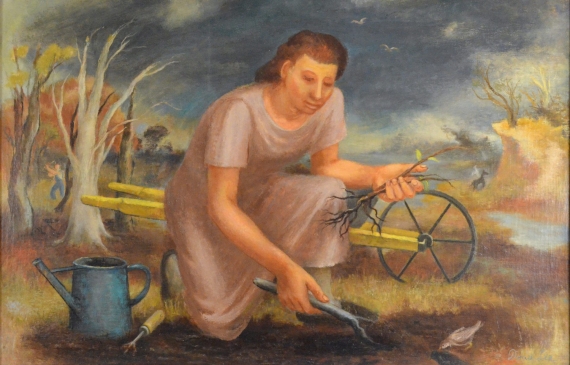
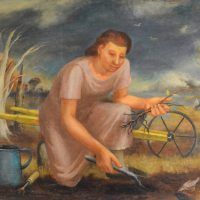
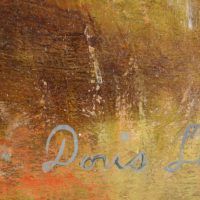
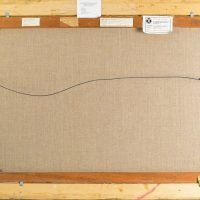

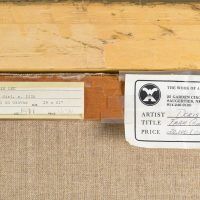
Doris Lee
American, 1905 – 1983
Country Woman, 1936
Oil on canvas
28 ¼ H. x 41 ¼ W. inches
An American Scene painter of realistic subjects in a style that combined Realism and Modernism, Doris Lee settled in Woodstock, New York, having followed her teacher and husband, Arnold Blanch. Her subject matter reflects her Midwestern heritage as well as big-city industrial scenes and shows her wide-ranging quest for a national identity, which was typical of many of her peers in the 1930s.
In 1935, she got national attention for her painting, Thanksgiving, which, painted in a carefree naive manner, showed a kitchen scene of bustling, humorous activity. The work won the Logan Purchase Prize at the Art Institute of Chicago, but Mrs. Logan, the sponsor of the contest, was so angered by the choice that she launched a campaign calling for sanity in art. However, the painting proved to be very popular and was reproduced many times as postcards and prints.
Lee was born in Aledo, Illinois, and grew up in a well-ordered domestic environment with women making quilts and pursuing other craft-oriented activities. She graduated from Rockford College, Illinois in 1927 and then studied at the Kansas City Art Institute with impressionist Ernest Lawson and in Paris with cubist Andre L’Hote. Early in her career, she married photographer Russell Lee, a relationship that terminated. In 1930, she studied in San Francisco with Arnold Blanch, whom she married in 1939, and he was the major influence on her signature style, encouraging her to work from nature and paint real-life subjects.
In 1931, they moved to Woodstock, New York where she was active in the local art association and found inspiration of her paintings of local scenes. She remained there until her death in 1983, but she also spent much time in Key West Florida
Four years later, she won two mural commissions of a contest sponsored by the United States Post Office department and completed works that were very much a part of the prevalent American Scene painting. She also completed illustrations for Life magazine, won the Carnegie Prize in 1944, and co-authored a book with her husband titled It’s Fun to Paint.